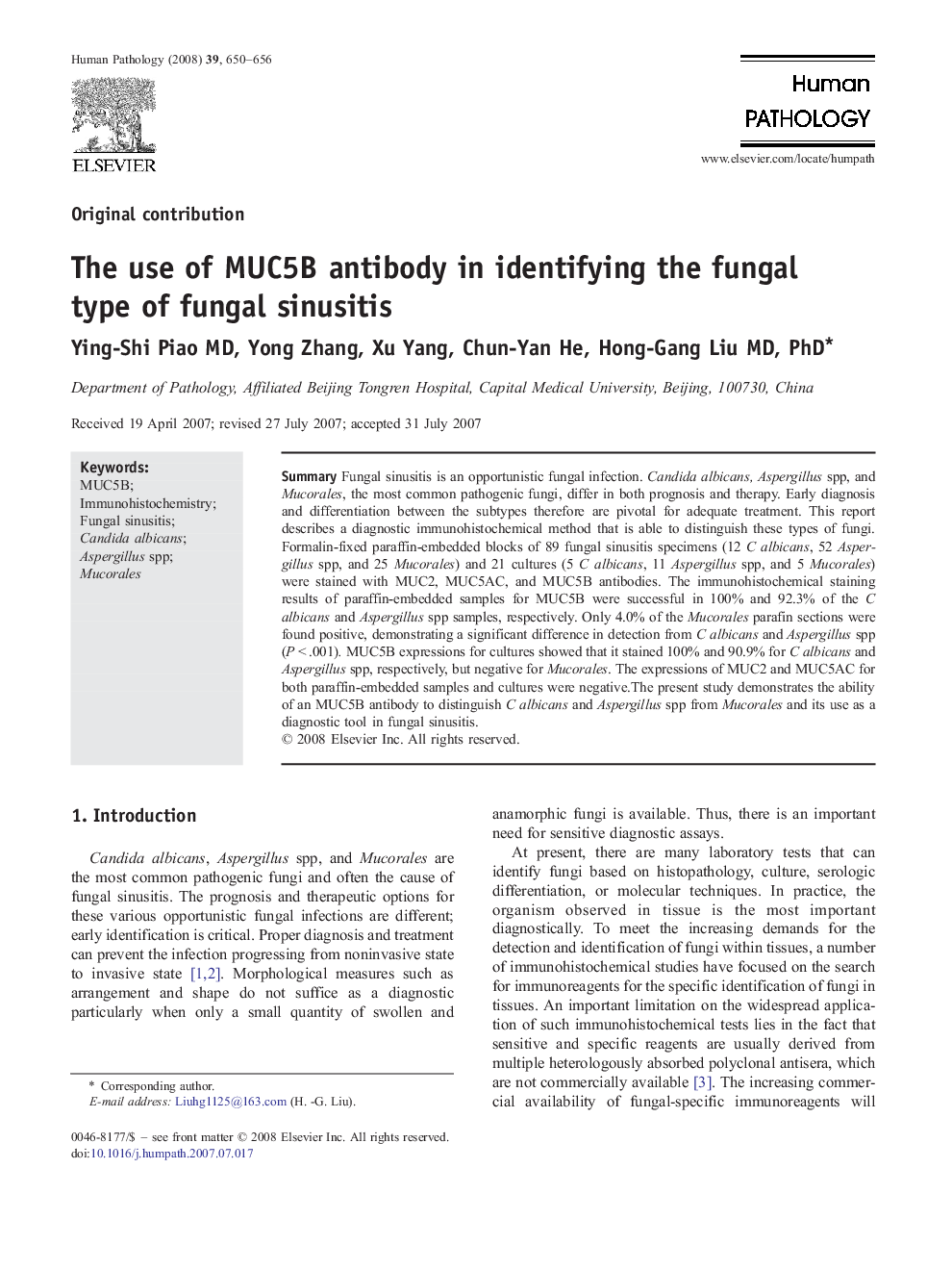| Article ID | Journal | Published Year | Pages | File Type |
|---|---|---|---|---|
| 4135399 | Human Pathology | 2008 | 7 Pages |
SummaryFungal sinusitis is an opportunistic fungal infection. Candida albicans, Aspergillus spp, and Mucorales, the most common pathogenic fungi, differ in both prognosis and therapy. Early diagnosis and differentiation between the subtypes therefore are pivotal for adequate treatment. This report describes a diagnostic immunohistochemical method that is able to distinguish these types of fungi.Formalin-fixed paraffin-embedded blocks of 89 fungal sinusitis specimens (12 C albicans, 52 Aspergillus spp, and 25 Mucorales) and 21 cultures (5 C albicans, 11 Aspergillus spp, and 5 Mucorales) were stained with MUC2, MUC5AC, and MUC5B antibodies. The immunohistochemical staining results of paraffin-embedded samples for MUC5B were successful in 100% and 92.3% of the C albicans and Aspergillus spp samples, respectively. Only 4.0% of the Mucorales parafin sections were found positive, demonstrating a significant difference in detection from C albicans and Aspergillus spp (P < .001). MUC5B expressions for cultures showed that it stained 100% and 90.9% for C albicans and Aspergillus spp, respectively, but negative for Mucorales. The expressions of MUC2 and MUC5AC for both paraffin-embedded samples and cultures were negative.The present study demonstrates the ability of an MUC5B antibody to distinguish C albicans and Aspergillus spp from Mucorales and its use as a diagnostic tool in fungal sinusitis.
